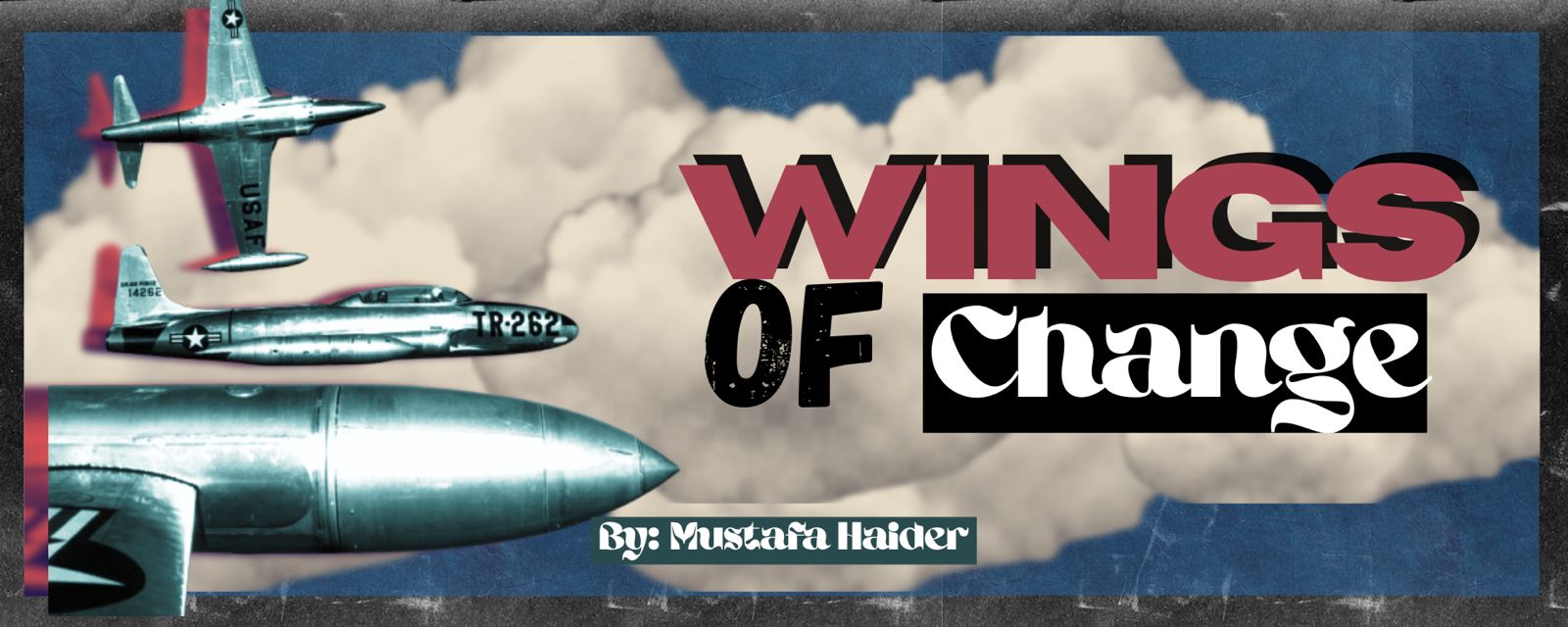For centuries, humanity fought wars with men, clad in armor. On foot or on a horse, with a sword or with a gun, they fought on the very soil that supported them. The paradigm of this scheme shifted in 1903, when 2 brothers, Orville and Wilbur Wright, invented the first ever plane. They successfully launched the first powered, controlled flight in Kitty Hawk, North Carolina. The brief 12-second journey that would change the course of history began as the experimental machine, made of wood and canvas, and soon evolved into a roaring metal beast capable of breaking sound barriers.
The first-ever fighter Jet made its appearance in the Battle of Normandy in 1944. The Germans attempted to intercept the Allied bombing and ended up placing the world in a state of both awe and terror. The invention itself was a massive technological leap. The Messerschmitt Me 262, the first ever Fighter jet to conquer the skies, was an invention way ahead of its time. It had two Jumo 004 turbojet engines, giving it a top speed of 540+ mph, 100 mph higher than what any Allied aircraft had at that time. Clad in heavy armor and armed with 30 mm canons and rockets, it was a force to be reckoned with. Despite all that, it aged quickly. The jet had its reliability issues, with frequent failures; it was used only for short missions.
An improved version was introduced by the USSR in 1947. The MiG-15, with mid-mounted swept wings and a powerful centrifugal-flow engine, was extremely agile. Capable of speeds over 670 mph, the MiG-15 was a vast improvement over the Messerschmitt. It carried 37 mm cannons and played a pivotal part in the Korean War, where the Soviets surpassed the West in aviation. The focus on cannons was soon abandoned as the next generation of fighter jets arrived.
McDonnell Douglas F-4 Phantom II, introduced in the early 1960s, shifted the paradigm of jets as it became the first to ever introduce radar-based systems. It became the first ever jet to use missiles instead of cannons. With speeds nearly touching Mach 2, the jet used infrared-based missiles, which meant dogfights were obsolete. However, this belief was changed during the Vietnam War, where close-range combat became crucial. Despite this, the F-4 Phantom proved incredibly versatile, serving in air superiority, ground attack, and reconnaissance roles across multiple branches of the U.S. military. Its adaptability and sheer strength made it a benchmark for future planes that were to be invented.
The F-16 Fighting Falcon became the next big thing. Introduced in the early 1970s, it represented a huge shift in both the design and quality of the aircraft. It became the first ever plane to introduce a bubble canopy for a better, 360-degree view. It prioritized agility and the pilot’s awareness more, which made it stand out. The lightweight frame and high thrust-to-weight ratio made it aerodynamically unstable, which allowed extreme maneuverability. With thousands produced and still in service worldwide, the F-16 became one of the most successful and influential fighters in aviation history, setting the bar for all light, versatile combat aircraft that followed after it.
The F-117 Nighthawk was the first plane to ever cross the benchmark set by the F-16. This was a stealth bomber, constructed under extreme secrecy by Lockheed’s Skunk Works. The F-117 was the first operational aircraft designed entirely around stealth principles, rather than speed or maneuverability. This aircraft was the first to prove that aircraft survivability did not depend on its speed or maneuverability but on its ability to conceal itself whenever required. It was constructed in a way that its shape bent radio waves, not allowing them to return, and was made of radar-absorbing materials. This new paradigm of radar evasion completely changed how wars would be fought in the 21st century. Though officially retired in 2008, the F-117 remains a symbol of technological daring and the start of a new era in air power.
The F-22 Raptor was by far considered one of the most dominant air fighters to ever exist. It included all of the features that made it a 5th-generation aircraft. Full-spectrum stealth, supersonic flight without afterburners, sensor fusion, and 3D thrust-vectoring in a single, unprecedented platform, it had it all. Specifically made to manipulate electromagnetic frequencies, it introduced a new paradigm called “First look, First shot, First kill”. With speeds that touched Mach 2.25, the ability to capture radar signals and give the pilot a clear view of the field, it remained a technological benchmark, and no other fighter jet ever challenged its full range of capabilities.
Lastly, the F-35 Lightning II remains one of the most ambitious evolutions of fighter jets. With advanced sensor fusion and Distributed Aperture Systems, it allows pilots to “see through” the aircraft with a special kind of display on their helmets. It contained multi-domain technology, which allowed them to connect to nearby jets using the same network and ground forces easily. This made it a force multiplier with critical battle intelligence, placing it as the most advanced aircraft to ever exist, so far.
From a plane made from canvas and wood to an aircraft that could cross 2000 mph, the evolution of aircraft has been short of extraordinary. Each generation bought faster jets with advanced technology, and now moving onto the 6th generation, where countries race to develop AI-based systems with hypersonic weapons, one can say that the story of fighter jets has just taken off.
-Mustafa Haider

